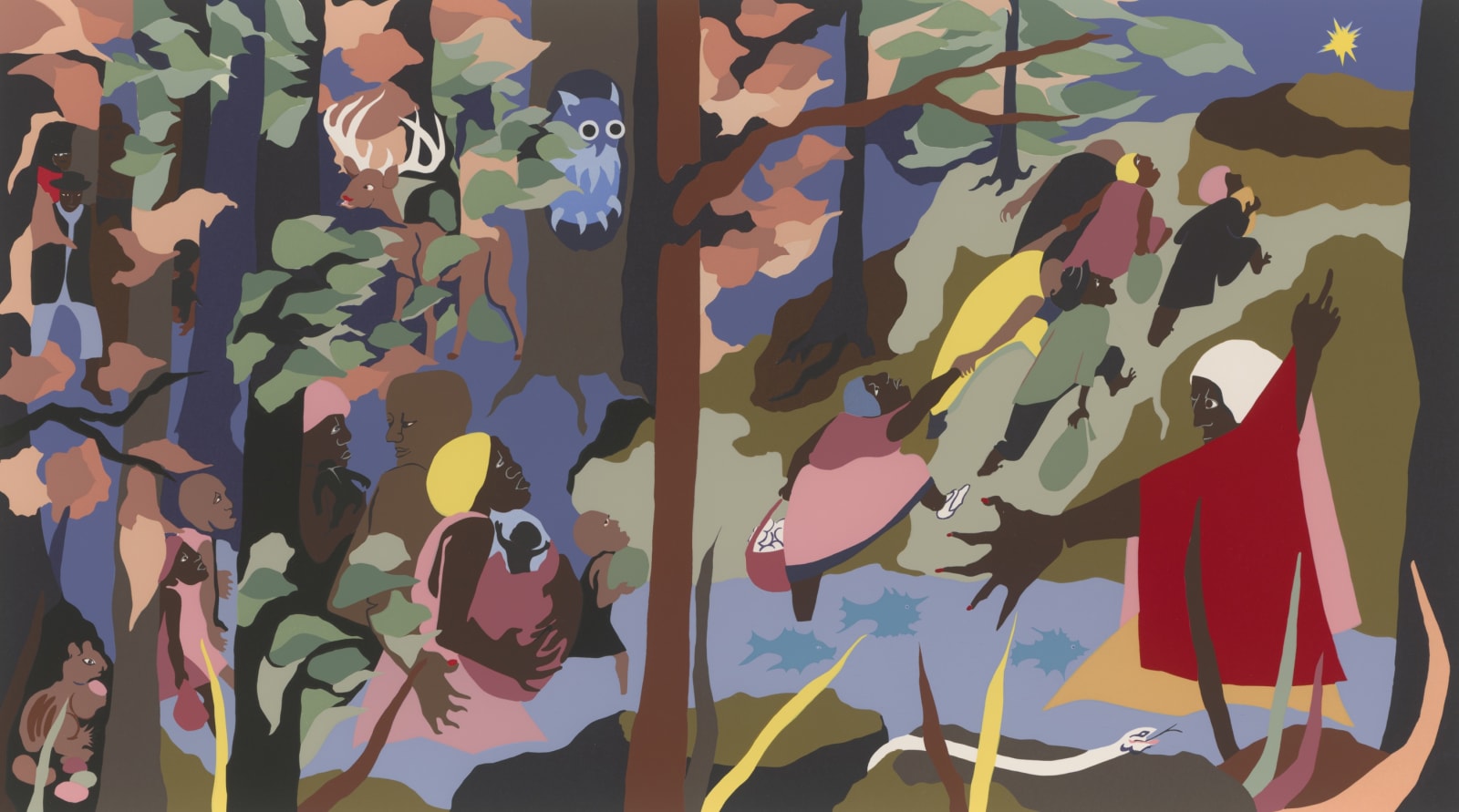Jacob Lawrence American, 1917-2000
framed: 33 1/2 x 48 1/2"
Growing up during the height of the Harlem Renaissance, Jacob Lawrence was a gifted young artist interested in documenting his personal experiences and the experiences of the people around him. While the adults of this era were suffering through the Great Depression's reality, many children benefited from the artistic vitality of the federally funded art workshops. These art centers, led by Augustus Savage and Charles Alston became major hubs for the Harlem cultural community. Poets Countee Cullen, Langston Hughes, and Claude McKay added to the variety and education available at these cultural centers. Lawrence found the atmosphere stimulating, inspirational, and empowering. "This had a certain kind of magic to it, that I was able to put something on paper, be able to put something on a two-dimensional picture plane that had some meaning. I couldn't put this into words I was only 14-15 years of age, but I think that was it, that intrigued me, putting black next to red. I could make decisions. Do I want to use this color or that color? People like myself, very rarely had the opportunity of making decisions, you see . . . so you were in a certain kind of control here and it was a very constructive kind of a thing"
Lawrence took every advantage given to him. When he wasn't working his laundry job, as a paperboy, or going to school, he was attending a WPA art workshop or researching and learning at the Arturo Schomburg Center for Research in Black Culture - a unique resource for black culture worldwide. Lawrence was a voracious reader and took notes about black history, and his art began to reflect his new awareness. As early as 1937, he celebrated the life of Toussaint L'Ouverture, the famous emancipator of slaves in the French colony of Saint Dominique, which led to Haiti's liberation. His interest in themes of self-expression and freedom continued and led him also to illustrate the lives of Frederick Douglass, Harriet Tubman, and John Brown.
Forward Together is a dynamic color screen print chronicling the heroic actions of Harriet Tubman, "The Moses of her people," as she led hundreds of enslaved people North towards freedom. The imagery is multilayered in meaning and construction. We feel the wind blowing the leaves in the trees, we see the animals peeking out from their hiding places, and we sympathize with the people moving through the forest under the shadow of the North Star, following their path towards freedom. Through color and form, the artist's unique, semi-abstract, angular style creates an exciting and vibrant image that stimulates the eye and mind as much as it stirs the soul with its message of hope. Lawrence created this screenprint as a limited edition in support of the Children's Defense Fund. He based it on his 1967 painting Through Forest, Through Rivers, Up Mountains, which is part of the permanent collection at the Hirschorn Museum.
"What else would I have been doing? Would my life be a destructive one if I had not had this outlet?" Jacob Lawrence believes that art transforms and saves lives. Although he illustrates the harsh realities of racial oppression in his subject matter, he resists both fantasy and pessimism and focuses on examples of goodness and uplift in our society to share his vision of hope for all humankind.

